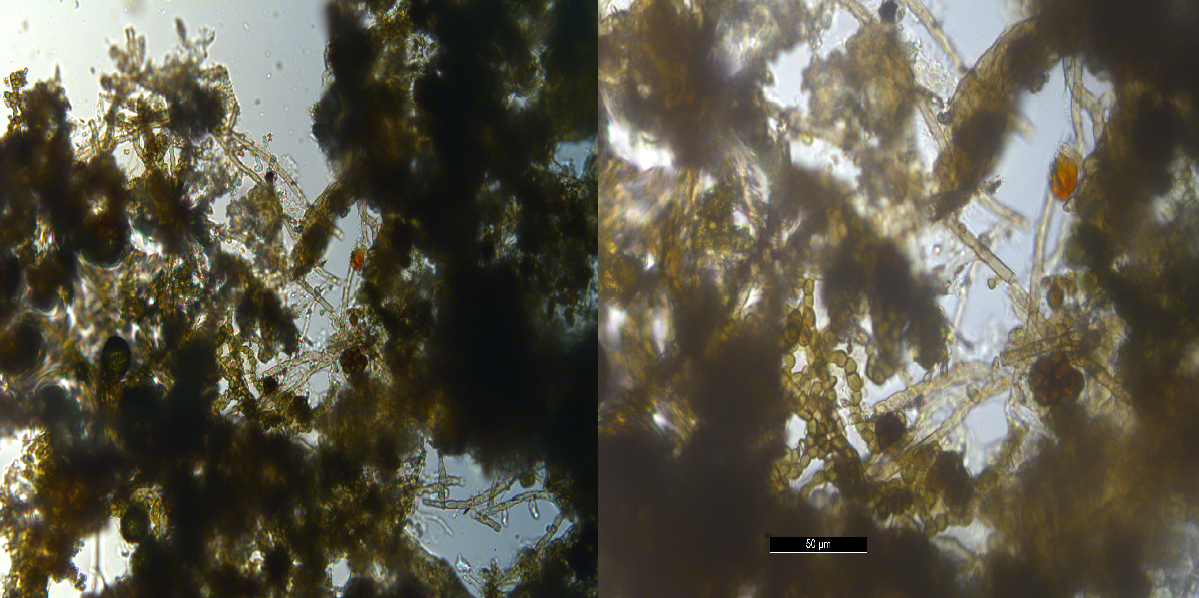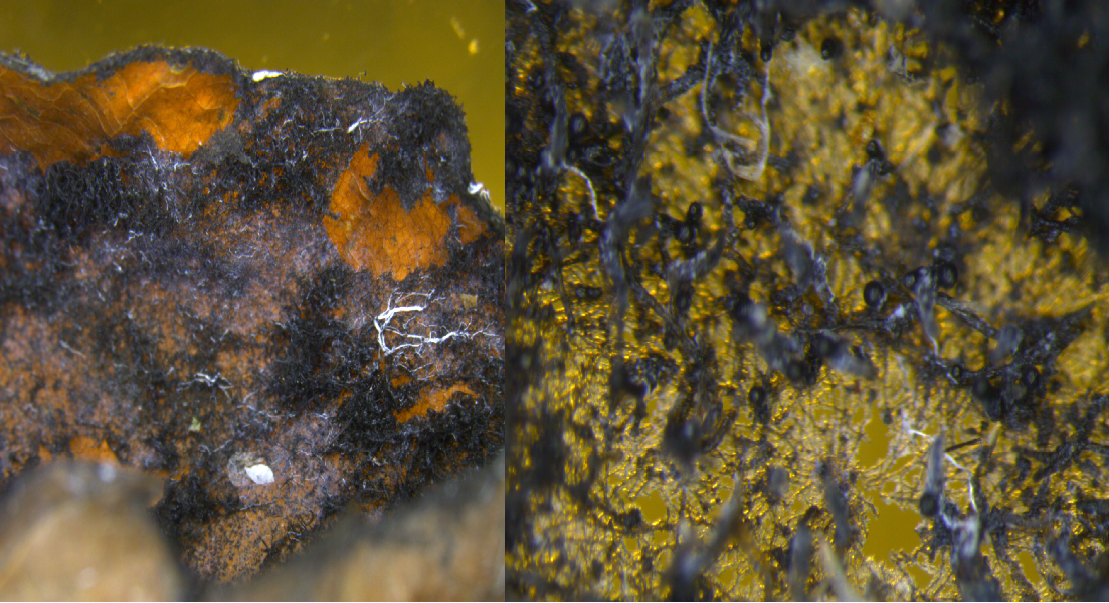Sooty Molds
This interesting specimen was found in the Sanford natural area on the north side of campus.

This interesting specimen was found in the Sanford natural area on the north side of campus. At first I did not know what to think, is this even a fungus? I felt the black mass and to my surprise it was quite soft and spongy. I packed a blackened leaf in my pocket and went on with my hike.
Back in the lab, I Found very interesting structures under the microscope (see below). After some reading, I realized this was a sooty mold in the order Capnodiales. These sooty molds grow on aphid honeydew. It is not actually infecting the tree, rather just growing outside of it living off the sugars from the honeydew. However, it can cover up leaf area which reduces photosynthesis, and can end up delaying the tree.
These fungi are able to grow in this unusual upright positions because their mass of mycelium easily traps and holds moisture, otherwise this position would be too dry.
I was not able to find a good key, or other species specific information on these sooty molds to properly identify it. However, this very well could be Scorias spongiosa, which is specific to the American beech (Fagus grandifolia). This sooty mold is present throughout the United States and Canada. This species produces pseudothecia in the spongy mass. Pseudothecia is a flask like structure with ascospores inside.
If you find sooty molds on one of your trees, some suggest washing off trees with hot water. You will help wash off the insects, the honeydew, and the fungi. Although it may start again, at least you will return some photosynthetic area to the tree for a time.



Sources:



 Print
Print Email
Email



